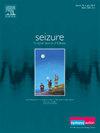老年发展性和癫痫性脑病患者的癫痫发作报告:动态视频脑电图报告的回顾性回顾
IF 2.8
3区 医学
Q2 CLINICAL NEUROLOGY
引用次数: 0
摘要
目的准确的癫痫发作报告对评估发育性和癫痫性脑病的治疗效果和指导急性治疗至关重要。本研究比较了癫痫发作日记与动态视频脑电图报告的敏感性和阳性预测值(PPV)。方法回顾性队列研究(2018-2024)分析澳大利亚19家诊所的视频脑电图报告。vEEG数据未重新审查。确诊的患者接受1-7天的动态视频脑电图和完整的癫痫发作日记。敏感性(正确记录的真实癫痫发作的比例)和PPV(确认为癫痫发作的日记事件的比例)与神经科医生报告的vEEG事件进行比较。还收集了人口统计学和临床数据。结果该研究包括65例lenox - gastaut综合征(LGS)患者的108份记录,10例Dravet综合征,33例其他/未指定的综合征。队列中51%为女性,中位年龄为15岁(范围5-63岁)。在LGS和其他dee中,较高的非癫痫事件报告与较少的真实癫痫发作记录相关。虽然许多参与者的灵敏度或PPV都达到了1,但很少有人两者都达到了。不同诊断类别在敏感性或PPV方面没有发现显著的组水平差异。结论癫痫发作日记在准确记录癫痫发作活动方面存在差异,存在非癫痫性事件的多报和真实发作的少报。这些发现强调需要像视频脑电图这样的客观工具来提高癫痫发作报告的准确性。本文章由计算机程序翻译,如有差异,请以英文原文为准。
Seizure reporting in older patients with developmental and epileptic encephalopathies: A retrospective review of ambulatory video-EEG reports
Purpose
Accurate seizure reporting is crucial for assessing treatment efficacy and guiding acute management in developmental and epileptic encephalopathies (DEEs). This study evaluates the sensitivity and positive predictive value (PPV) of seizure diaries compared to ambulatory video-EEG reports.
Methods
This retrospective cohort study (2018–2024) analyzed video-EEG reports from 19 Australian clinics. vEEG data were not re-reviewed. Patients with confirmed DEEs underwent 1–7 days of ambulatory video-EEG and completed seizure diaries. Sensitivity (proportion of true seizures correctly recorded) and PPV (proportion of diary events confirmed as seizures) were compared to neurologist-reported vEEG events. Demographic and clinical data were also collected.
Results
The study included 108 recordings from 65 patients with Lennox-Gastaut Syndrome (LGS), 10 with Dravet Syndrome, and 33 with other/unspecified DEEs. The cohort was 51 % female, with a median age of 15 years (range 5–63). In LGS and other DEEs, higher reporting of non-epileptic events correlated with fewer true seizure recordings. While many participants achieved a sensitivity or PPV of 1, few achieved both. No significant group-level differences in sensitivity or PPV were found across diagnostic categories.
Conclusion
Seizure diaries show variability in accurately capturing seizure activity in DEEs, with over-reporting of non-epileptic events and under-recognition of true seizures. These findings highlight the need for objective tools like video-EEG to improve seizure reporting accuracy.
求助全文
通过发布文献求助,成功后即可免费获取论文全文。
去求助
来源期刊

Seizure-European Journal of Epilepsy
医学-临床神经学
CiteScore
5.60
自引率
6.70%
发文量
231
审稿时长
34 days
期刊介绍:
Seizure - European Journal of Epilepsy is an international journal owned by Epilepsy Action (the largest member led epilepsy organisation in the UK). It provides a forum for papers on all topics related to epilepsy and seizure disorders.
 求助内容:
求助内容: 应助结果提醒方式:
应助结果提醒方式:


